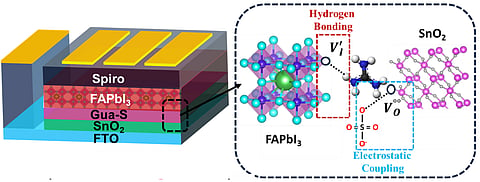
New Delhi- A group of researchers from the Indian Institute of Technology (IIT) Delhi, led by Professor Trilok Singh from the Department of Energy Science and Engineering (DESE), has made a significant breakthrough in the field of perovskite solar cell technology. Their research, recently published in the SMALL Journal (Wiley), offers a potential solution to overcome the limitations of traditional perovskite solar cell fabrication, paving the way for the development of thin-film solar cells as a more affordable and efficient alternative to silicon-based solar cells.
Perovskite solar cells have garnered attention for their ability to generate higher solar energy at potentially lower costs compared to conventional silicon solar cells. However, scaling up perovskite technology has been hindered by challenges related to device stability and reproducibility, particularly under ambient conditions. The presence of defects and stresses within the perovskite material can significantly impact charge recombination and ion migration, affecting the overall performance and longevity of the solar cells.
To address these issues, the IIT Delhi team focused on developing an anti-solvent-free device fabrication strategy. By carefully selecting specific molecules, they were able to manage the reproducibility of the devices and achieve higher efficiency and stability. The researchers employed Guanidine sulfate salt (Gua-S) at the electron transport layer (ETL)/Perovskite interface to prevent lattice mismatch and reduce interfacial stresses. The Gua-S salt, with its amino anchoring groups (-NH) and sulfate anion (SO), effectively tackles cationic and anionic defects in the film, contributing to improved device performance.
"The device demonstrated exceptional stability, maintaining 87% of its initial PCE after 2000 hours of operation," said Prof. Trilok Singh. "This highlights the potential of Gua-S as an effective approach for improving both the performance and long-term stability of PSCs."
This innovative approach, using anti-solvent-free techniques, holds great promise for the upscaling of perovskite solar cells under ambient conditions, potentially revolutionizing the solar energy landscape.
You can also join our WhatsApp group to get premium and selected news of The Mooknayak on WhatsApp. Click here to join the WhatsApp group.